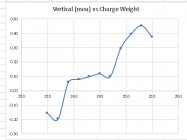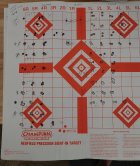dgeesaman
Gold $$ Contributor
A few thoughts:Recently I’ve read/heard some people in the industry suggesting that seating depth and powder charge isn’t as critical as some of us think. These people include Bryan Litz and ballisticians at Hornady…… I’m just wondering how much time and components I’m wasting if I’m just chasing statistically insignificant results?
1) “statistically significant results” sounds like it’s clear and important but the boundary of what an investigator considers to be statistically significant is an academic assumption. For most benchrest shooters, being 75% certain of optimal tune is good enough because you will be making adjustments on the competition day and between relays and nobody expects to independently repeat your experiment and get the same results.
2) I believe ‘load development’ is as much about eliminating bad combinations as much or more than achieving certainty you’ve chosen the most perfect one. So even a cheap 2-shot group ladder can achieve that.
3) if you perform a powder ladder and seating ladder, then perform a fine seating ladder third, your final load will have been tested two or three times.
4) Brian and Hornady are writing for shooting disciplines like PRS where a normal comp is 80 rounds with no sighters, no cleaning, and no compensation for changing conditions. Their tune is not the same thing as a benchrest tune.
5) Statistical certainty of a moving target is a fools errand. Maybe you can do it in .308 with enough components, but for most match calibers the barrel will evolve in 100, certainly 200 rounds. Statistics wonks haven’t even completed a “statistically significant” powder charge test by this point. So on paper it has more certainty but in the real world the system is not compatible with such a concept.
Last edited:













